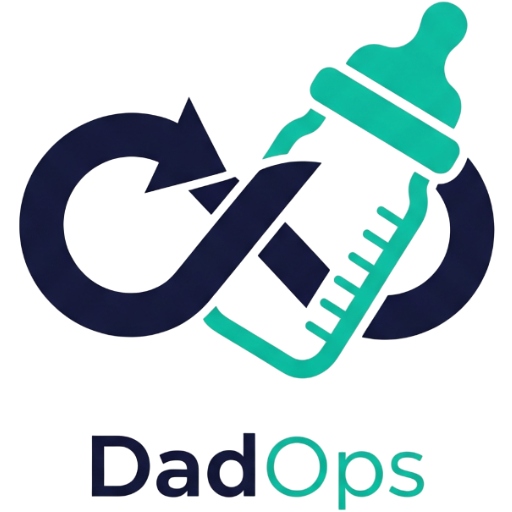Feeling your baby move for the first time is like getting feedback on a new app—surprising, delightful, and sometimes mysterious! Expect sensations akin to gentle taps or bubbles popping in random rhythms. Is that a kick or just a hiccup? Each flicker feels like a secret handshake, adding excitement to your parenting journey. It’s like your baby’s in beta testing mode! Keep exploring these thrilling moments to find out what they reveal.
Key Points
- The first baby movements are akin to beta testing, offering initial feedback in the pregnancy journey.
- Movements such as flutters or nudges signal the baby’s presence, enhancing parental connection.
- Recognizing patterns in movements helps monitor fetal activity and development.
- Emotional reactions to baby movements can enhance bonding and create meaningful shared experiences.
- Early fetal interactions lay the foundation for active parenthood and ongoing engagement.
Anticipating the First User Interaction

How do you prepare for the first moment you feel the baby move? Think of it as anticipating your very first user feedback. The excitement of feeling baby move, those initial flutters, is like the first kicks of a groundbreaking app—unexpected yet thrilling. Here’s your quick guide:
- Expect the unexpected: Fetal movement can feel like soft taps or bubbles.
- Timing varies: Some dads notice these first kicks around 18-25 weeks.
- Be present: Pay attention to these gentle nudges; they’re your baby’s way of saying, “Hey, I’m here!” Smart Strategies for organizing and maintaining essential supplies can make these moments even more enjoyable by reducing stress and clutter in the nursery.
- Just as the Heartbeat Module enhances system robustness and stability, these early interactions pave the way for understanding and adapting to future developments.
- By embracing active involvement, fathers can ensure they are present during these initial movements, which aligns with modern parenting principles.
The Initial User Feedback: What to Expect
Imagine you’re a developer nervously awaiting that first user review; well, the stakes are even higher now as you brace for the initial feedback from your tiny co-pilot. This is the quickening, my friend. Your baby’s first movements are like a beta test in progress.
You’re expecting:
- A flutter: Soft, like whispers of user joy.
- A tickle: Surprising, akin to unexpected app features.
- A nudge: Firm, a reminder that updates may follow.
Each sensation signals your co-pilot’s presence, creating a delightful UI/UX experience. Don’t worry if feedback is vague; it’s all part of the wondrous journey of parenting. Enjoy! Selecting the right baby carrier can enhance this experience by providing comfort and safety, much like an ergonomic design enhances a user’s interaction with an app. Just as establishing a bedtime routine can improve sleep quality and reduce stress, being attentive to these initial movements can enhance your bond with your baby.
During this time, just as prenatal care is essential for ensuring your baby’s healthy development from embryo to fetus, so too is being attentive to these initial movements.
Decoding the Movement: Is That a Kick or a Glitch?

You’re on the front lines of your own little UI/UX test, trying to figure out if that flutter was a baby kick or just a hiccup in the system. Think of it like interpreting Morse code with a side order of giggles—each movement is a new clue in the mystery of Baby’s First Movements. Keep an eye out for patterns and rhythms; soon enough, you’ll be distinguishing between those kicks and the inevitable hiccups like a pro. Understanding the dynamic nature of our bodies can help you appreciate these subtle changes and better interpret the signals your body is sending. Achieving a balanced approach to these metrics is key to ensuring you are attuned to these movements, fostering a deeper connection and understanding of your body’s communication. Just as dads are encouraged to build a supportive network to help manage stress, expecting parents can benefit from sharing their experiences and insights with others, enhancing their understanding of these early movements.
Interpreting Baby’s First Movements
As you settle into the role of “DadOps”, deciphering your baby’s first movements is like troubleshooting the quirks of a new app—exciting, bewildering, and full of potential for unexpected hilarity. Is that a kick, or did the burrito you had for lunch just stage a coup? Let’s break it down:
| Movement | Likely Interpretation |
|---|---|
| Flutter | Baby’s gentle hello |
| Jab | Future soccer star |
| Roll | Tiny acrobat in action |
Stay alert! Each move is like a quirky notification you can’t ignore. Embrace the mystery, and remember, in this UI/UX testing phase, laughter is your best debug tool! Just like ongoing monitoring is crucial in managing web systems, staying attentive to these movements is key to understanding your baby. Advances in REM Detection Prototype technology have shown how crucial refining and integrating new algorithms can be in enhancing precision, much like understanding a baby’s movements. It’s important to recognize when professional medical evaluation is necessary to ensure the healthy development of your baby.
Recognizing Patterns and Rhythms
Once you start recognizing patterns and rhythms in your baby’s movements, it’s like cracking the code of a new game level. You’re on a quest, deciphering kicks and somersaults, each with its own tempo. Think of it as your baby’s way of sending a beta version of their dance routine.
- Morning jabs? That’s your coffee alarm.
- Evening wiggles? The baby’s saying, “Hey, Dad, Netflix time!”
- Random flutters? They’re testing the waters of their future groove.
It’s an ever-changing playlist, and you’re the DJ learning to groove. Proper nutrition, like in optimizing hair and nail health, plays a crucial role in supporting the growth and development of your baby during pregnancy. Keep a keen eye—or belly—out for those rhythms. They’re your ultimate cheat code. With each movement, you are also reminded of the importance of early detection in prenatal care to ensure the health and well-being of both mother and baby. Secure bonds contribute to emotional stability, resilience, and healthy relationships, which can be foundational even before birth.
Distinguishing Between Kicks and Hiccups
How do you tell if that tiny thump is a kick or just your baby’s version of a server hiccup? Think of it like troubleshooting a quirky app feature.
- Kicks: Strong, sporadic, and attention-grabbing—like a bold notification that demands action. They’re your little one’s way of saying, “I’m here, Dad!”
- Hiccups: Rhythmic and repetitive, akin to a background process running quietly. They come in gentle, consistent patterns, much like a clock’s ticking. Understanding their unique sleep patterns can also help in recognizing these movements.
- Routine and Engagement: Establishing a consistent routine and engaging your toddler in age-appropriate activities can help foster a sense of inclusion during the pregnancy process.
The Emotional Rollercoaster of First Contact

Imagine you’re waiting for that first bit of feedback from a new app user, and suddenly—there it is, a little flutter, a surprising twitch that’s both thrilling and slightly terrifying. Your heart races as you realize this tiny movement is your baby’s way of saying, “Hello, Dad,” in the most unexpected yet delightful way.
You laugh, maybe even tear up a bit, because in this moment, the emotional rollercoaster of experiencing this first contact becomes the most exhilarating ride of your life. Much like decoding baby communication, understanding these early signs can empower parents to respond effectively and build a stronger bond with their infants. Consistent tummy time exercises are essential for strengthening a baby’s neck, shoulder, and arm muscles, which can aid in achieving developmental milestones like crawling and sitting.
Anticipation Builds: Initial Movements
Imagine this: you’re deep into the DadOps project, exploring the mysterious world of impending fatherhood, when suddenly, you get that first bit of “user feedback”—the baby’s initial wiggle. Anticipation’s been building like a suspenseful movie, and now, the plot twist! Here’s your baby’s five-star review, or perhaps a tiny nudge saying, “I’m here, Dad!”
This moment feels like:
- Opening an email from the universe.
- A sudden plot twist in the DadOps saga.
- A secret handshake with your future sidekick.
Each movement is a delightful surprise, a tiny hello that makes the wait worthwhile. You’re officially in the game!
Surprising Sensations: Unexpected Twitches
Amid the whirlwind of emotions, you might find yourself caught off guard by these “unexpected twitches,” or the latest chapter in your DadOps adventure. Envision this: you’re lounging on the couch when suddenly—bloop!—there’s a tiny, elusive flutter. It’s like the baby’s first attempt at Morse code.
Here’s what you might experience:
- A popcorn pop: Quick and surprising, just like that kernel you didn’t see coming.
- The goldfish flip: A gentle somersault, as if your little one’s practicing its Olympic routine.
- Alien invasions: Slightly eerie but mostly delightful, these movements remind you that your baby’s UI/UX testing has begun!
Emotional Response: Heartfelt Reactions
Your heart’s already in full swing from those unexpected twitches, and now it’s time for the grand spectacle: the emotional rollercoaster of first contact. Imagine this as the baby’s beta test for touching your soul. Here’s the breakdown:
- Shock: “Whoa, was that a glitch or a kick?”
- Awe: Like witnessing a rare cosmic event, but in your partner’s belly.
- Joy: Pure, unfiltered happiness, sprinkled with giggles.
- Panic: “Wait, is this supposed to happen?!” (Spoiler: Yes, it is.)
Brace yourself, Dad. You’re not just feeling kicks; you’re receiving love taps, straight from the heart’s core.
Sharing the Experience: A Collaborative UX Moment

When that tiny foot first kicks, it’s like your baby just hit the “send” button on their very first feedback form—directly to you!
Suddenly, you’re part of a UX team with your partner, sharing the sensation like it’s the latest app update.
You’re now a dynamic duo in the UX team of life, experiencing every kick like a new app feature.
Here’s how to make the most of this collaborative moment:
- Capture the Moment: Share a laugh, maybe even a happy tear.
- Communicate: Discuss how it felt, adding your own “user” insights.
- Celebrate: High-fives all around! You’ve just unbarred a new level in the parenting game.
The Iterative Feedback Loop: Feeling Baby Move Again
As your little one kicks again, it’s like they’ve just sent another round of user feedback—welcome to the iterative feedback loop! Each nudge is an update in the baby app of life. You’re not just a dad-to-be; you’re a project manager in this whimsical world of parenting.
Here’s how to keep things smooth:
- Stay connected: Share these kicks with your partner; it’s a joint venture.
- Track movements: Get an app (or a trusty notebook) to log patterns.
- Stay curious: Each movement offers a new insight into your baby’s growth.
When the Baby Goes Into Beta Testing: Frequent Movements

Imagine your baby has just entered the beta testing phase, and those frequent kicks are like a flurry of notifications from a lively app. You’re feeling them everywhere—your own little internal bug report. Here’s what to expect:
- Random Kicks: Those surprise pokes? Like pop-ups when you least expect them.
- Pattern Recognition: You’ll start noticing trends. Baby’s active at 3 AM? Might want to adjust your night owl habits.
- UI Updates: Each movement is a new version release, making you wonder what’s next.
Frequent movements are your baby’s way of saying, “Hey, Dad, I’m here and ready to roll!”
Reflecting on the User Experience Journey
Reflecting on the user experience journey of feeling your baby’s first movements is like reviewing the quirks of a newly launched app. You’re steering a mix of awe and amusement, with every little flutter sparking reactions. It’s a thrilling rollercoaster, right?
Here’s what you might notice:
- Unexpected Surprises: Just when you think you know the pattern, they throw in a new move! Keeps you on your toes, doesn’t it?
- Emotional Updates: Each kick feels like a notification ping, reminding you of the love you’re about to plunge into.
- User Feedback: Your gut reactions say it all—priceless!
Frequently Asked Questions
How Do I Know if It’s My Baby Moving or Just Gas?
You might wonder if that’s baby movement or just gas. Trust your instincts; baby kicks feel like gentle flutters or bubbles. As movements grow stronger, you’ll confidently distinguish them. It’s an exciting milestone in your journey!
Is There a Specific Time of Day When Movement Is Most Noticeable?
You might notice the baby moving more in the evening when you’re relaxing. It’s like they’ve clocked in for their night shift, giving you that exciting “user feedback” you’ve been avidly waiting for all day.
How Can I Differentiate Between Kicks and Other Types of Movement?
You’ll notice kicks feel like distinct, rhythmic thumps, while other movements might resemble gentle flutters or rolls. Trust your instincts—you’re the ultimate user experiencing the baby’s unique interface for the first time. Enjoy every moment!
Should I Be Concerned if the Movement Is Irregular?
Don’t worry if movements feel irregular; it’s normal during this phase. Your baby is still exploring their new environment. If you’re ever unsure, consult your doctor for reassurance and guidance. Enjoy these precious first feedback moments!
Can I Encourage the Baby to Move More or Less Frequently?
You can encourage movement by gently poking or playing music, but remember, your baby’s got their own schedule! Try not to stress over frequency; just enjoy these early “user feedback” moments as they come.




